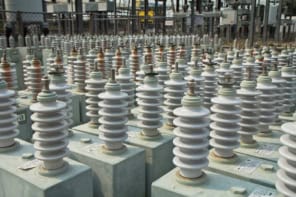
In its new report, the government’s advisory Committee on Climate Change (CCC) says we should aim to reduce greenhouse gas emissions to net zero by 2050. It wants a legislated UK target for a 100% reduction in greenhouse gases from 1990 levels, which should cover all sectors of the economy, including international aviation and shipping, and be in the place this year. It should be met via UK effort, without relying on internationally traded carbon credits. With its higher emissions from agriculture, Wales should set a target for a 95% cut in emissions by 2050. Better-placed Scotland should aim for net-zero emissions by 2045, and in the interim 70% by 2030 and 90% by 2040; the Scottish government has now agreed to that.

UK Committee on Climate Change recommends net zero emissions by 2050
However, the CCC says all this will need new policies: “current policy is insufficient for even the existing targets”. Its proposals certainly are quite ambitious. For example, the CCC looks to extensive electrification, particularly of transport. By 2035 at the latest, “all new cars and vans should be electric (or use a low-carbon alternative such as hydrogen)”. Electrification of heating is also backed strongly, with both these policies aided by a major expansion of renewable and other low-carbon power generation, including possibly some nuclear. Their scenarios have around a doubling of electricity demand, with all power produced from zero/low-carbon sources, compared to 50% today. The CCC says that could, for example, “require 75 GW of offshore wind in 2050, compared to 8 GW today and 30 GW targeted by the Government’s sector deal by 2030. 75 GW of offshore wind would require up to 7500 turbines and could fit within 1–2% of the UK seabed, comparable to the area of sites already leased for wind projects by the Crown Estate”.
The CCC also wants to see the development of a hydrogen economy to service demands for some industrial processes, for energy-dense applications in long-distance heavy goods vehicles (HGVs) and ships, and for electricity supply and heating in peak periods, topping up the heat provided mainly by electric heat pumps. By 2050 “a new low-carbon industry is needed with UK hydrogen production capacity of comparable size to the UK’s current fleet of gas-fired power stations”. In addition, the CCC sees carbon capture and storage (CCS) expanding in industry especially, and thinks direct air capture may be viable, but it also calls for vast expansion of tree planting and carbon sequestration via revised farming practices, as well as a shift to less meat-eating, to further cut emissions.
Costs not prohibitive
Crucially the CCC says that, despite its ambitious technology programme, the “overall costs are manageable” although they “must be fairly distributed”. There have been rapid cost reductions from mass deployment for key technologies, e.g. the committee says, offshore wind and batteries for electric vehicles (EVs), so “we now expect that a net-zero GHG [greenhouse gas] target can be met at an annual resource cost of up to 1–2% of GDP to 2050, the same cost as the previous expectation for an 80% reduction from 1990”. However, “the transition, including for workers and energy bill payers, must be fair, and perceived to be fair. Government should develop the necessary frameworks to ensure this. An early priority must be to review the plan for funding and the distribution of costs for businesses, households and the Exchequer.”
the CCC adopts a belt and braces approach
Dave Elliott
“Electricity bill payers (households and businesses) currently pay around £7bn a year towards the roll-out of low-carbon power,” the CCC says. “This is expected to rise to around £12bn by 2030 then fall to 2050 as contracts for existing renewable generators come to an end and they are replaced by newer cheaper generation (e.g. our scenarios involve an annual resource cost of around £4bn in 2050). For households, the average costs so far, of £105 per household per year in 2016, have been more than outweighed by savings from improved energy efficiency: energy bills fell £115 in real terms from 2008 to 2016. That balance will continue to 2030 (i.e. overall bills need not rise as a result of climate policy).” And, generally, while the programme would need increased investment, that would be offset by reduced fuel costs: “For example, wind and solar farms are costly to build, but avoid the need to pay for gas and coal; energy efficiency involves an upfront cost followed by reduced energy use.” And by 2050, the CCC says, EV/electrification should “cut the annual costs of UK transport by around £5bn”.
Power-to-gas marginal
A key message underlying this optimism is that most of the technologies will be cheaper and offer cost-saving routes forward, although “CCS and hydrogen are important exceptions requiring both increased upfront spend and higher fuel costs”. Interestingly, in this context, the technical annex downplays the hydrogen “power-to-gas” (P2G) electrolysis route: “The cost of electricity would have to be less than £10/MWh for electrolysis to be the same cost as we expect for gas reforming with CCS in the UK, or energy consumption from electrolysis would have to reduce significantly. While there is some opportunity to utilize some ‘surplus’ electricity (e.g. from renewables generating at times of low demand) for hydrogen production, our modelling shows that the quantity is likely to be small in comparison to the potential scale of hydrogen demand. Producing hydrogen in bulk from electrolysis would be much more expensive and would entail extremely challenging build rates for zero-carbon electricity generation capacity.”

Hydrogen: the word from the UK’s Committee on Climate Change
In its net-zero 2050 scenario CCC has a vast 270 TWh of hydrogen production, compared to around 300 TWh of electricity generation currently. Most (225 TWh) of this 270 W is produced from 29 GW of Steam Methane Reformation (SMR) plants using fossil gas, coupled with CCS to make it lower carbon. And only 2 TWh gets used for power-grid balancing. By contrast, there’s only 6–17 GW of renewable-powered electrolyser capacity at max (indeed just 2–7 GW is cited later on), depending on load factors, which the CCC says could range from 30–90%, with 74% efficiency. Running 90% of the time makes better use of the electrolyser, thus reducing costs. But that implies going beyond just using occasional renewable output surpluses (available maybe 30% of the time), so more renewable capacity would be needed, adding to the cost. “Our scenarios assume that hydrogen production at scale is done via gas-reforming with CCS rather than electrolysis,” the CCC says. “If all hydrogen in our scenarios were produced via electrolysis this would increase electricity generation by over 305 TWh.”
On the fossil-gas SMR side, the CCC assumes methane reformation is 80% efficient and that CCS can capture 95% of process carbon dioxide. But it says these estimates “should be considered upper bounds”. They do seem very high. The likely net carbon saving for the proposed Leeds H21 SMR/CCS project has been put at 59% compared to normal gas heating. So P2G still looks worth backing, not least as it avoids curtailment, with some claiming that it will be competitive by 2035.
Renewables to the fore
Although the CCC is cautious on bioenergy, with its estimates of global bioenergy supply potential being “notably lower than assumed in many of the scenarios assessed by the IPCC”, renewables are otherwise pushed hard but, the committee claims, not unrealistically: “Our scenarios are based on existing technologies and make conservative assumptions around their development and take-up of low-carbon behaviours. If mass roll-out of currently niche technologies leads to rapid cost reductions (e.g. as witnessed globally for batteries and solar panels and in Europe for offshore wind), the scenarios will be significantly easier to deliver.”
Overall, the CCC says “while the policy challenge in delivering these scenarios is undeniable, there is good reason to believe that the range of options could be wider and/or cheaper than we have assumed”. For example, it sees nuclear costs falling by 28% by 2050 and it also seems to see nuclear possibly playing a role in grid-balancing. Presumably the CCC is thinking of future small modular reactors, some of which are claimed will be more flexible than the existing, or planned, large plants. That seems some way off.
However, on this and some of the other technology options, the CCC adopts a belt and braces approach: “if the speculative options to reduce UK emissions do not develop sufficiently, or if there is a shortfall in delivery of the other elements of the scenarios, then international carbon units (i.e. credits or offsets) could provide contingency”. For example, it suggests that the UK “could support a net-zero target for aviation, requiring that all emissions are offset by removals”, assuming, presumably, they can’t be cut significantly in other ways, technically or by reducing demand. The latter option, and the prospect that flying will cost more, may be one of the less popular aspects of the plan. However, the CCC analysis also provides ammunition for those who argue that there will be no need for, or indeed room for, nuclear in this future system.



